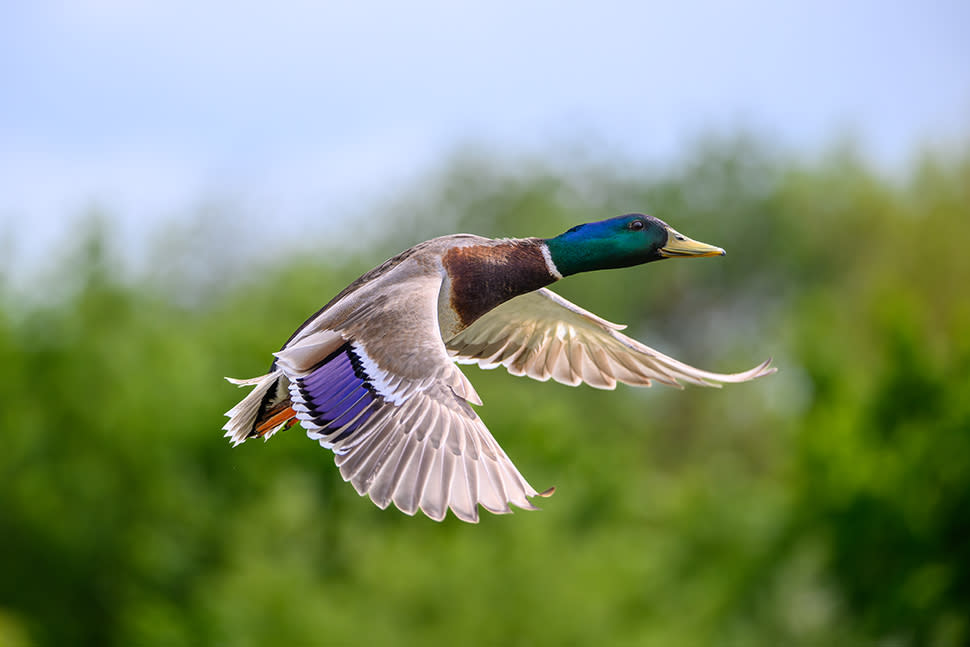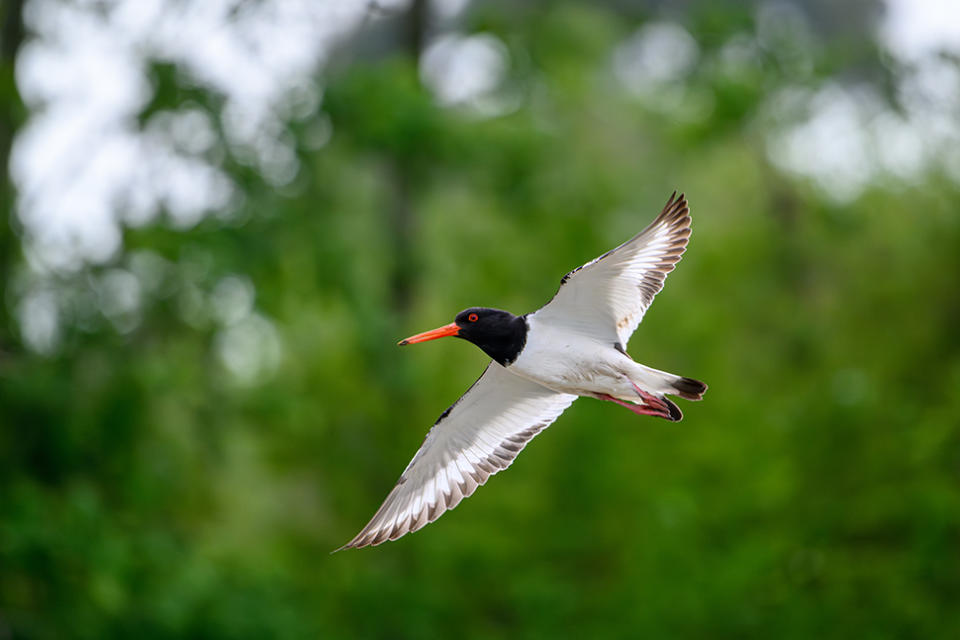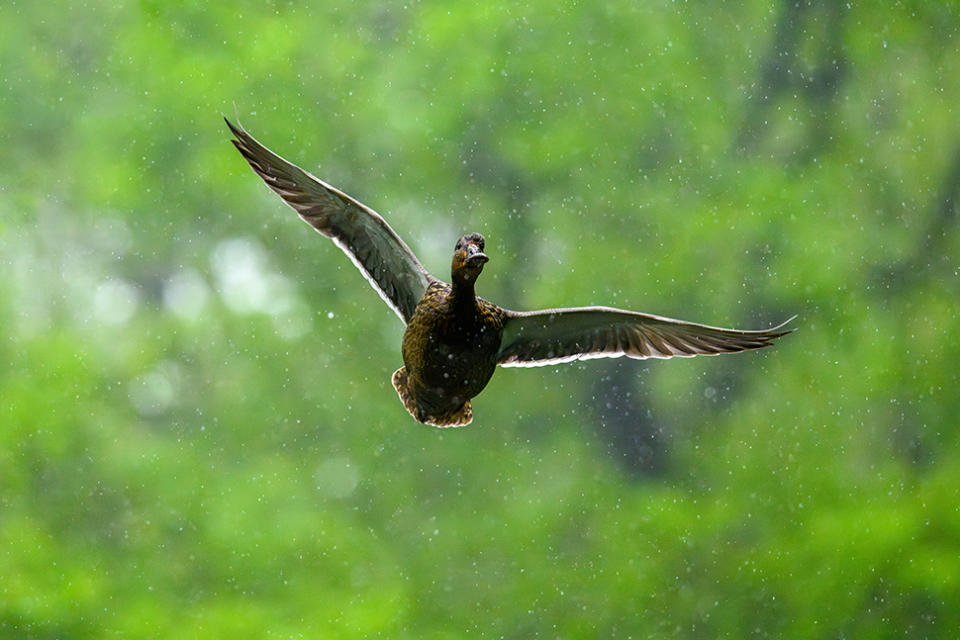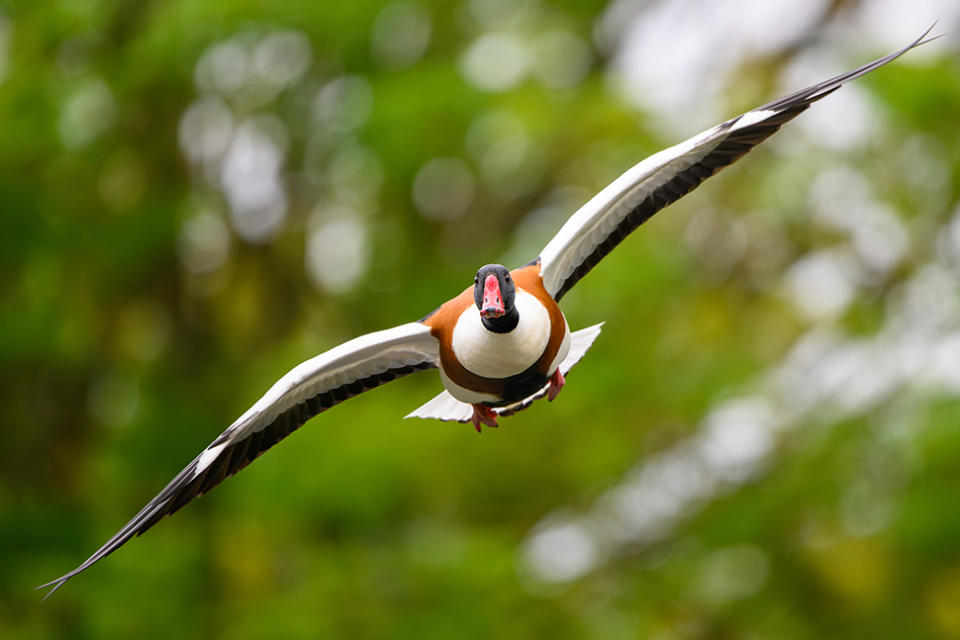My mission is to take brilliant photos of birds in flight, and I’ve taken some quacking shots!

My Mission

Mission: Photograph birds in flight while out on wildlife photo walks in rural Wales and England
Photographer: Robert May
Location: Cardiff
Kit used: Nikon Z9, Mount Adapter FTZ II, Sigma 150-600mm f/5-6.3 DG OS HSM | S
Website: www.robertmay.photography
YouTube: www.youtube.com/@robert_may
As a certified nerd (my day job is software engineering), I find I’m very comfortable photographing birds. They never complain about how they look, and they usually don’t attack me. For me, the only essential items are a reliable camera body, a battery grip – unless you’re using a camera with a built-in grip like the Nikon Z9 or the Nikon D6 – and a long lens. I carry lots of other stuff, but only because I’m a habitual over-packer. Oh, and a waterproof jacket. I live in Wales, after all...
I’m not a very patient person, so my approach to wildlife photography is to wander around and hope for the best. This isn’t a technique, per se, but it does tend to work out quite well. Here in South Wales, we’re a bit lacking in larger mammals, so I’m mostly all about birds in flight. I just love the challenge.
I look for a few key elements when I capture a bird in flight. Ideally, the bird is flying towards the camera and is making some sort of eye contact. I then aim to capture a sharp head, blurry wing tips and a soft, creamy background.
My best shots

This mallard duck took off and flew so close to me at Slimbridge Wetland Centre that I had to rapidly reduce the focal length back to 320mm in order to fit him in the frame. Prime lenses tend to boast unrivaled image quality, but a zoom lens is useful when you have to react quickly in situations like this.

My main AF setup for capturing birds in flight is activated by half-pressing the shutter button to use subject detection, with wide-area AF set to the largest size. This means that even if a subject isn’t detected, such as if it’s moving very quickly or making an unusual shape, the AF still defaults to whatever’s closest to the camera and inside the focus area, which should be the bird. This usually means that I’m focusing much like using single-point AF, but with the added bonus of subject detection kicking in, just like it did in this photo.

Most of my favorite shots tend to be of common species, like this female mallard flying in the rain at Forest Farm in Cardiff. I love the effect rain brings to bird photos – and I’m not just saying that because I live in Wales. The moment I captured this shot can be seen on my YouTube video below – a single, two-second event in a 12-minute video of me wandering about in the rain. The Z9’s weather sealing held up superbly.
To capture the shot I used the record button, next to the shutter button, to recall my emergency birds in flight settings. Manual mode with Auto ISO, 1/4000 sec, f/8, highlight-weighted metering, wide-area AF with subject detection.

This is a shelduck flying right at me. I’d like to claim my framing is always this perfect, but this is slightly cropped. At f/6.3 there was a risk that the camera would miss the focus on the eyes here, but to my surprise, it tracked them perfectly. No mean feat when a subject is traveling rapidly towards the camera!
My bird action photography tips
Increase that shutter speed! As a general rule, I like to aim for 1/2,500 sec on a 20-ish megapixel body and 1/3,200 – 1/4,000 sec on anything higher resolution. Don’t worry about boosting your ISO – within your Nikon camera’s limits – to compensate.
Ditch the tripod or monopod, if you can. A battery grip will help balance long lenses for more comfortable and successful handheld photographs. If you’re in a hide, that’s a different matter.
Get out and shoot in the rain. I’d rarely get outside if I didn’t – that’s the Welsh climate for you – but it’s also great weather for ducks.
Read more:

